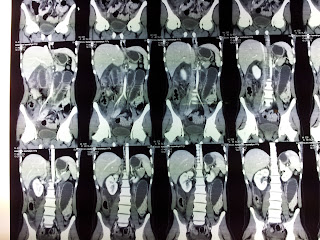Background: Laparoscopic inguinal hernia repair (LIHR), using a transabdominal preperitoneal (TAPP) or totally extraperitoneal (TEP) technique, is an alternative to conventional open inguinal hernia repair (OIHR). A consensus on outcomes of LIHR when compared with OIHR for primary, unilateral, inguinal hernia has not been reached.
Objectives: Perform a meta-analysis of all randomized controlled trials (RCTs) comparing OIHR and LIHR for primary unilateral inguinal hernia. Outcomes were hernia recurrence and surgery-related morbidity.
Methods: A comprehensive search for published RCTs comparing LIHR with OIHR for primary, unilateral, and inguinal hernia was performed. Reviews of each study were conducted and data were extracted. Random effect methods were used to combine data.
Results: Data were retrieved from 27 RCTs describing 7161 patients. An increased risk in hernia recurrence existed when LIHR was compared with OIHR (relative risk [RR] = 2.06, 95% confidence interval [CI] = 1.26–3.37, P = 0.004). TAPP had equivalent recurrence (RR = 1.14, 95% CI = 0.78–1.68, P = 0.491) but TEP had increased recurrence of risk (RR = 3.72, 95% CI = 1.66–8.35, P = 0.001) relative to OIHR. LIHR was associated with greater perioperative complication risk than OIHR (RR = 1.22, 95% CI = 1.04–1.42, P = 0.015). TAPP (RR = 1.47, 95% CI = 1.18–1.84, P < 0.001) but not TEP (RR = 1.05, 95% CI = 0.85–1.30, P = 0.667) was associated with this increased complication risk. LIHR was associated with reduced risk of chronic pain (RR = 0.66, 95% CI = 0.51–0.87, P = 0.003) and chronic numbness (RR = 0.27, 95% CI = 0.12–0.58, P < 0.001) relative to OIHR.
Conclusions: For primary unilateral inguinal hernia, TEP is associated with an increased risk of recurrence relative to OIHR but TAPP is not. TAPP is associated with increased risk of perioperative complications relative to OIHR. LIHR has a reduced risk of chronic pain and numbness relative to OIHR
www.gisurgerysurat.com/
www.drkeyurbhatt.in/
www.sidshospital.com
Dr. Keyur Bhatt - Best
Gastro Surgeon
Dr. Keyur Bhatt- Best GI
Surgeon
Dr. Keyur Bhatt - Best
Gastro Surgeon
Dr. Keyur Bhatt- Best GI
Surgeon - Dr Keyur Bhatt - Best Gastro Surgeon
Dr. Keyur Bhatt- Best GI
Surgeon - Dr Keyur Bhatt - Best Gastro Surgeon
Dr Keyur
Bhatt- Best GI Surgeon















